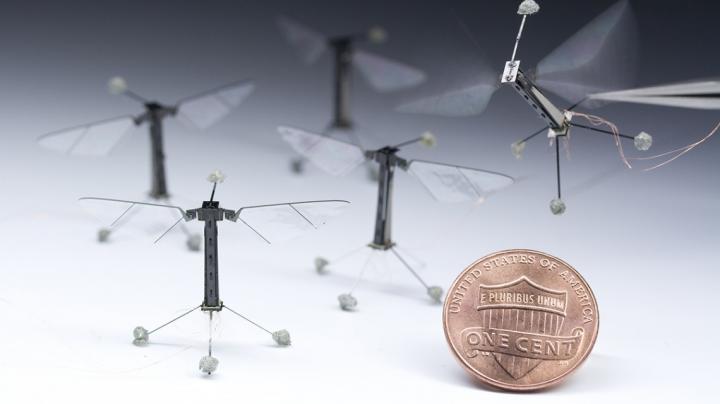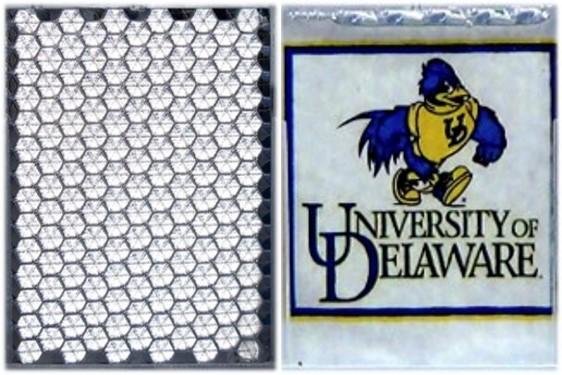
A crate containing one of the twin Gravity Recovery and Climate Experiment Follow-On (GRACE-FO) satellites is offloaded from an air freighter at California’s Vandenberg Air Force Base Dec. 12 following a transcontinental flight from Germany. GRACE-FO is scheduled for launch next spring. (Image Credit: USAF)
Next-Generation Installment Of GRACE Satellite Readying For Launch
Earlier this week, a pair of advanced research satellites that respectively hail from the United States and Germany, arrived at California’s Vandenberg Air Force Base to apply the final preparatory touches for their launch next spring. The twin satellites, known as the Gravity Recovery and Climate Experiment Follow-On (GRACE-FO) were placed aboard an air freighter at Munich Airport, following a year-long testing campaign on both crafts. GRACE-FO will provide a continual supply of climate data to Earth, just like its predecessor GRACE, whose 15-year mission concluded in October. GRACE-FO will seamlessly continue GRACE’s legacy of scientific achievements that range from tracking and estimating changes to Earth’s polar ice sheets and global groundwater, to monitoring shifts and alterations of large earthquakes, and deep ocean currents.

RoboBees manufactured by the Harvard Microrobotics Lab have a 3 centimeter wingspan and weigh only 80 milligrams. Cornell engineers are developing new programming that will make them more autonomous and adaptable to complex environments. (Image Credit: Harvard Microrobotics Lab)
Robots That Move, Think Like Insects
Researchers at Cornell University have been experimenting with a new type of programming that emulates how an insect’s brain functions. According to these scientists, the amount of computer processing power necessary for a robot to so much as detect a gust of wind (using tiny hair-like metal probes embedded on its wings, while adjusting its flight accordingly, and plan its path while attempting to land on a swaying flower) would require the bot to carry a computer the size of a desktop on its back. The researchers perceive the emergence of neuromorphic computer chips as means of shrinking a robot’s payload. Whereas traditional chips processing combinations of 0s and 1s as binary code, neuromorphic chips process spikes of electrical current that fire in complex combinations, similar to how neurons fire inside a brain. The team is developing a new “event-based” class of sensory and control algorithms that mimic neural activity and are deployable on neuromorphic chips.

Illumination of a book (‘Paradise Lost,’ by John Milton) with the nanobionic light-emitting plants (two 3.5-week-old watercress plants). The book and the light-emitting watercress plants were placed in front of a reflective paper to increase the influence from the light emitting plants to the book pages. (Image Credit: Seon-Yeong Kwak)
Plants That Give Off Light
Over at another university highly-touted for its innovative research, scientists at MIT made a significant first breakthrough towards making glowing plants a reality. In what can be described as a process that of “manmade bioluminescence”, specialized nanoparticles were embedded in the leaves of watercress, prompting the plants to emanate dim light for up to four hours. With further optimization, the researchers are confident this concept could one day enable plants to illuminate an entire workspace. The scientists on the project envision plants capable of functioning like a desk lamp, without the need for a power source like an outlet. Ultimately, the light is powered by the plant’s energy metabolism. The ceiling for this technology is very high, and could one day provide low-intensity indoor lighting, or even transform trees into self-powered streetlights.

Researchers created a prototype smart glass that is retroreflective (left) and becomes clear (right) when a liquid with optical properties similar to the reflective structure is pumped into a chamber in front of the structure. (Image Credit: Keith Goossen, University of Delaware)
Windows With “Switchable” Properties
New research demonstrated prototype windows capable of switching from reflective to clear surfaces. These “switchable” windows are easily manufactured and could one day fulfill roles like keeping parked cars cool in the sun, improve the energy efficiency of office buildings, or even develop roof panels that keep houses cool in the summer and warm in the winter. While glass that uses an applied voltage to switch from clear to tinted states is commercially available, its exorbitant cost (around $100 per square foot), has largely mitigated widespread use. These new smart windows contain a plastic panel with patterned structures that are retroreflective, meaning that instead of reflecting light in all directions (like a mirror), the panels reflect light back in the direction it originated (like a bicycle reflector). The Optical Society (OSA) journal Optics Express documents a demonstration with the smart glass that consists of a 3D-printed plastic panel covered by a thin chamber. The chamber is filled with methyl salicylate (which matches the plastic’s optical properties), causing the retroreflective structure to become transparent.
Filed Under: Aerospace + defense




